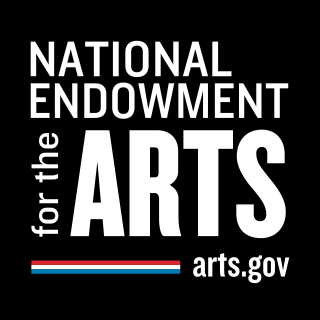Related Research Articles

Oregon State University (OSU) is a public land-grant research university in Corvallis, Oregon. The university currently offers more than 200 undergraduate-degree programs along with a variety of graduate and doctoral degrees. Student enrollment averages near 32,000, making it the state's largest university. Since its founding over 230,000 students have graduated from OSU. It is classified among "R1: Doctoral Universities – Very high research activity" with an additional, optional designation as a "Community Engagement" university.
The Canada Council for the Arts, commonly called the Canada Council, is a Crown corporation established in 1957 as an arts council of the Government of Canada, acting as the federal government's principal instrument for funding public arts, as well as for fostering and promoting the study & enjoyment of, and the production of works in, the arts.

The National Endowment for the Arts (NEA) is an independent agency of the United States federal government that offers support and funding for projects exhibiting artistic excellence. It was created by an act of the U.S. Congress in 1965 as an independent agency of the federal government. The agency was created by an act of the U.S. Congress and signed by President Lyndon B. Johnson on September 29, 1965. The Foundation consists of the National Endowment for the Arts, the National Endowment for the Humanities, the Federal Council on the Arts and the Humanities, and the Institute of Museum and Library Services.
The National Endowment for the Humanities (NEH) is an independent federal agency of the U.S. government, established by the National Foundation on the Arts and the Humanities Act of 1965, dedicated to supporting research, education, preservation, and public programs in the humanities. The NEH is housed at 400 7th St SW, Washington, D.C. From 1979 to 2014, NEH was at 1100 Pennsylvania Avenue, N.W., Washington, D.C. in the Nancy Hanks Center at the Old Post Office.

A financial endowment is a legal structure for managing, and in many cases indefinitely perpetuating, a pool of financial, real estate, or other investments for a specific purpose according to the will of its founders and donors. Endowments are often structured so that the principal value is kept intact, while the investment income or a small part of the principal is available for use each year.

The Pacific Northwest College of Art (PNCA) is a private fine arts and design college in Portland, Oregon. Established in 1909, the art school grants bachelor of fine arts degrees and graduate degrees including the master of fine arts (MFA) and master of arts (MA) degrees. It has an enrollment of about 500 students. PNCA actively participates in Portland's cultural life through a public program of exhibitions, lectures, and internationally recognized visual artists, designers, and creative thinkers.
The California Arts Council is a state agency based in Sacramento, United States. Its eleven council members are appointed by the Governor and the state Legislature. The agency's mission is to advance California through the arts and creativity.
The Esmée Fairbairn Foundation is a registered charity founded in England in 1961. It is one of the larger independent grantmaking foundations based in the UK, funding organisations which aim to improve the quality of life for people and communities in the UK.
The City of San Diego Commission for Arts and Culture is the official arts council for the city of San Diego, California. The Commission consists of 15 volunteers appointed by the Mayor of San Diego, supported by a professional staff.
The San Francisco Arts Commission (SFAC) is the official arts council for San Francisco, California.

The Regional Arts & Culture Council (RACC) is an organization that administers arts grants in Multnomah, Washington, and Clackamas Counties that also do advocacy in the Portland metropolitan area in Oregon, United States. It evolved from the city’s Metropolitan Arts Commission agency in the 1990s. In 1995, the Metropolitan Arts Commission became the RACC as an independent non-profit organization.
Arts administration is a field in the arts sector that facilitates programming within cultural organizations. Arts administrators are responsible for facilitating the day-to-day operations of the organization as well as the long term goals by and fulfilling its vision, mission and mandate. Arts management became present in the arts and culture sector in the 1960s. Organizations include professional non-profit entities. For examples theaters, museums, symphonies, jazz organizations, opera houses, ballet companies and many smaller professional and non-professional for-profit arts-related organizations. The duties of an arts administrator can include staff management, marketing, budget management, public relations, fundraising, program development evaluation, and board relations.
Marilyn Krysl is an American writer of short stories and poetry who is known for her quirky and witty storytelling. She has published four short story collections along with seven collections of poetry. She has won several awards for her work, including the 2008 Richard Sullivan Prize for short fiction for her collection of short stories, Dinner With Osama, which is a sociopolitical satire of post-9/11 America. Krysl also submits work to The Atlantic journal, The Nation journal, and The New Republic journal, as well as being an editor of Many Mountains Moving: A Literary Journal of Diverse, Contemporary Voices along with Naomi Horii.
Laura Kaminsky is an American composer, producer of musical and multi-disciplinary cultural events, and educator. She was born in New York City, graduated from the High School of Music and Art, and studied with Joseph Wood at Oberlin College and Mario Davidovsky at City College of New York. She graduated from City College/CUNY with a Master of Arts degree in composition in 1980.
National Endowment for the Arts v. Finley, 524 U.S. 569 (1998), was a United States Supreme Court case in which the Court ruled that the National Foundation on the Arts and Humanities Act, as amended in 1990,, was facially valid, as it neither inherently interfered with First Amendment rights nor violated constitutional vagueness principles. The act in question required the Chairperson of the National Endowment for the Arts (NEA) to ensure that "artistic excellence and artistic merit are the criteria by which [grant] applications are judged, taking into consideration general standards of decency and respect for the diverse beliefs and values of the American public". Justice O'Connor delivered the opinion of the Court.
The Wisconsin Arts Board (WAB) is a state agency based in Madison, Wisconsin. It is one of fifty-six state art agencies of the United States and works as a partner regionally with Arts Midwest and nationally with the National Endowment of the Arts. WAB's mission statement declares that it “is the state agency which nurtures creativity, cultivates expression, promotes the arts, supports the arts in education, stimulates community and economic development and serves as a resource for people of every cultural heritage.”

Big Red, also known as Red, is an outdoor 1974 steel sculpture by Bruce Beasley, installed at West 7th Avenue between Washington and Jefferson streets in Eugene, Oregon, United States.

Oregon Humanities, formerly known as the Oregon Council for the Humanities, is an independent, nonprofit affiliate of the National Endowment for the Humanities for the U.S. state of Oregon.
The Mississippi Arts Commission is an independent agency of the Mississippi state government and serves as the state's official grants-making and arts service agency. The Mississippi Arts Commission provides grant funding to both individual artists and organizations across the state. The agency was established by the Mississippi Legislature in 1968. The founding director, who was appointed by Governor John Bell Williams, was Lida Rogers. The current executive director is Malcolm White.
The Mississippi Writers Trail is a series of historical markers which celebrate the literary, social, historical, and cultural contributions of Mississippi's most acclaimed and influential writers. An advisory committee of state cultural agencies oversees the process of installing historical markers in places of significance to an author's life. To emphasize the literary focus of the trail, the markers are cast in the shape of an open book and display information about the author's life with the goal of educating the public about the legacy of Mississippi writers.
References
- 1 2 3 About Us Section : Oregon Arts Commission
- ↑ "The Oregon Arts Commission Offering Financial Aid To Local Filmmakers And Digital Media Artists – Grant Writer" . Retrieved 2017-05-06.
- ↑ Gamarekian, Barbara (1989-07-08). "Appointment To Arts Post Is Praised". The New York Times. Retrieved 2008-01-22.
- ↑ Communities - StatesmanJournal.com